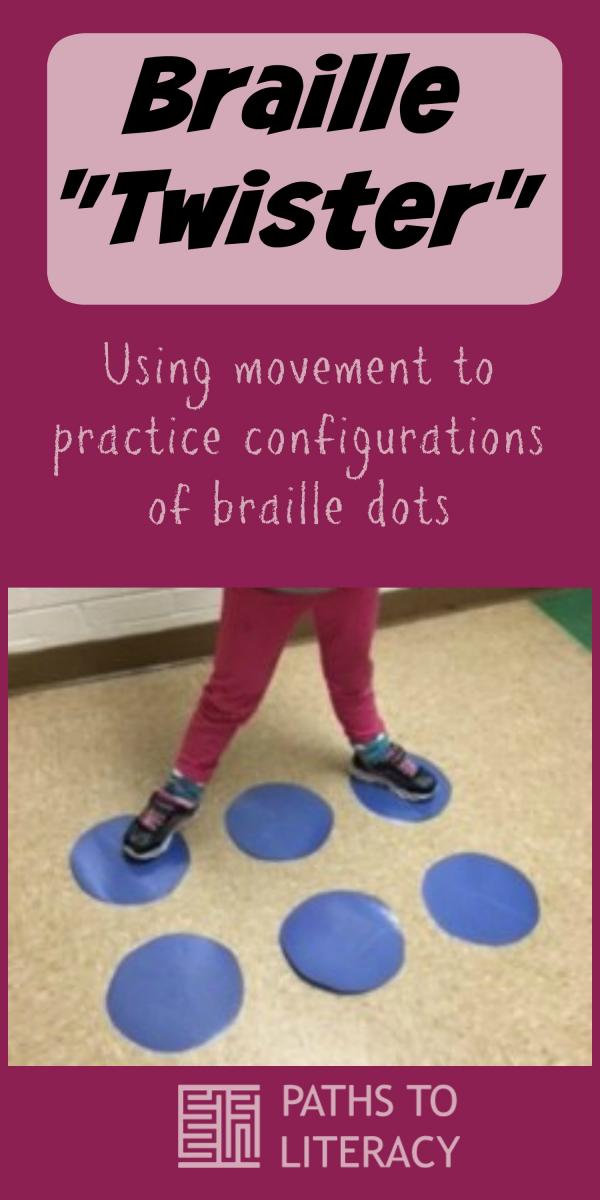Braille "Twister"
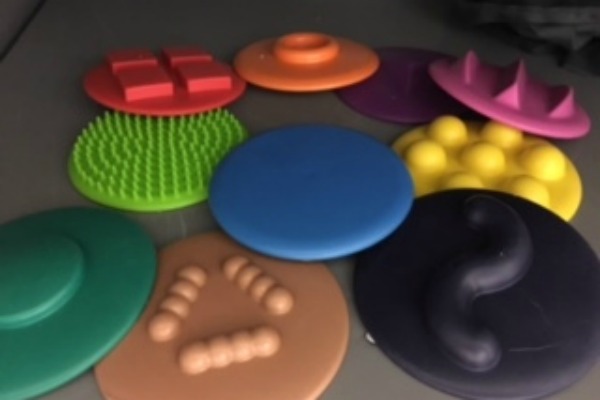
"Twister" might be a stretch, but it was the best name I could think of that is similar to the same concept idea as this game.
In New England this is the time of year people either love and embrace the winter, or hibernate and count down the days to spring. It can be 50 degrees one January day, and then -5 degrees the next. So, with the unreliable climate comes the inevitable indoor recess for our elementary students.
Indoor Games to Play in an Inclusive Setting
Let’s be honest and say that recess can be a hard time for some of our kiddos who are blind or have a significant visual impairment. In no other setting other than elementary school will our children have this “free time” to do as they please in usually an unstructured manner… so is the struggle. Indoor recess poses a whole new set of challenges. How can we create or provide a fun activity for our students while allowing them to be independent and social with their peers during this time?
Many of the posts I have put up recently (Braille Boggle, Braille Hieroglyphics, etc.) can be integrated into this time, but Braille “Twister” is one of my favorites to introduce and play.
This game started out as an instructional tool for my student when she was in Pre-School and Kindergarten to keep her little mind interested in our lessons without having to sit and track lines of braille continuously. The materials are very basic and low cost.
Making the Game Accessible to Students Who Are Blind or Visually Impaired
All I did was take 6 pieces of construction paper, (I chose blue for better contrast on the light colored floor in the school, but if your floors are darker lighter colored paper might be better). I cut them into 6 large circles to represent each of the 6 dots in a braille cell, and had them laminated. I taped them to the ground to prevent them from slipping around, and here is the end result:
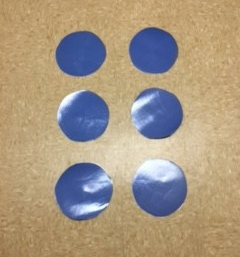
The game is simple and can be played a number of ways. When my student was learning the code, I would call out a letter and she would have to place her hands, feet, elbow, head, etc., on the corresponding dots to make what I was saying.
For example if I called out “B” she would show me “B” like this:
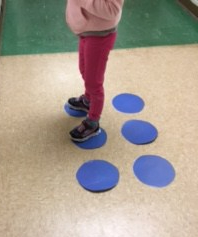
“K” would look like this:
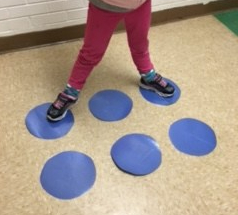
It would get really interesting when I asked for her to make the contraction “and”. She is using her head to touch the dot 2 here.
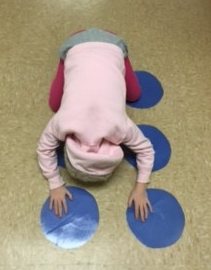
Modifications to the Game
This game is fun with one or two people, but even more fun when an element of competition is added. Some ways to modify this game include, but are not limited to:
- Have multiple sets of dots to create more cells of braille so that teams have to work together to create the required letter or contraction.
- Teams of 2 students, with or with or without vision, work together calling out letters and checking for accuracy using a braille card “cheat sheet” for reference.
Adaptations for Students Who Are Totally Blind
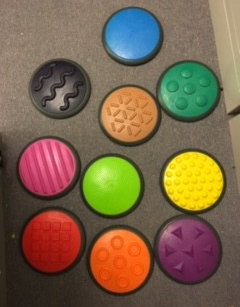
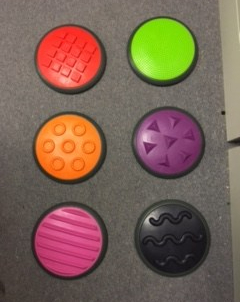
The kit also comes with a blindfold and smaller tactile disks that match up to the larger stones. Below you can see the pile of small disks on the left, and I have placed the small disks with the larger stepping stones on the right.
These are a great option for students who are totally blind. They are a little pricey, but they can be easily recreated using another tactile form, such as puff paint designs on each dot.

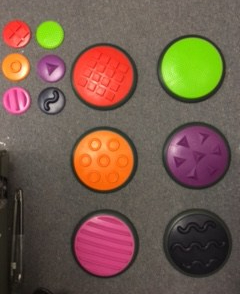
Sometimes just providing ready-made materials can spark the creativity of some young minds and the game options are endless.
Hope this is a game that will help you stay active in the cold months ahead while trying to get through the dreaded indoor recess time! ![]()

